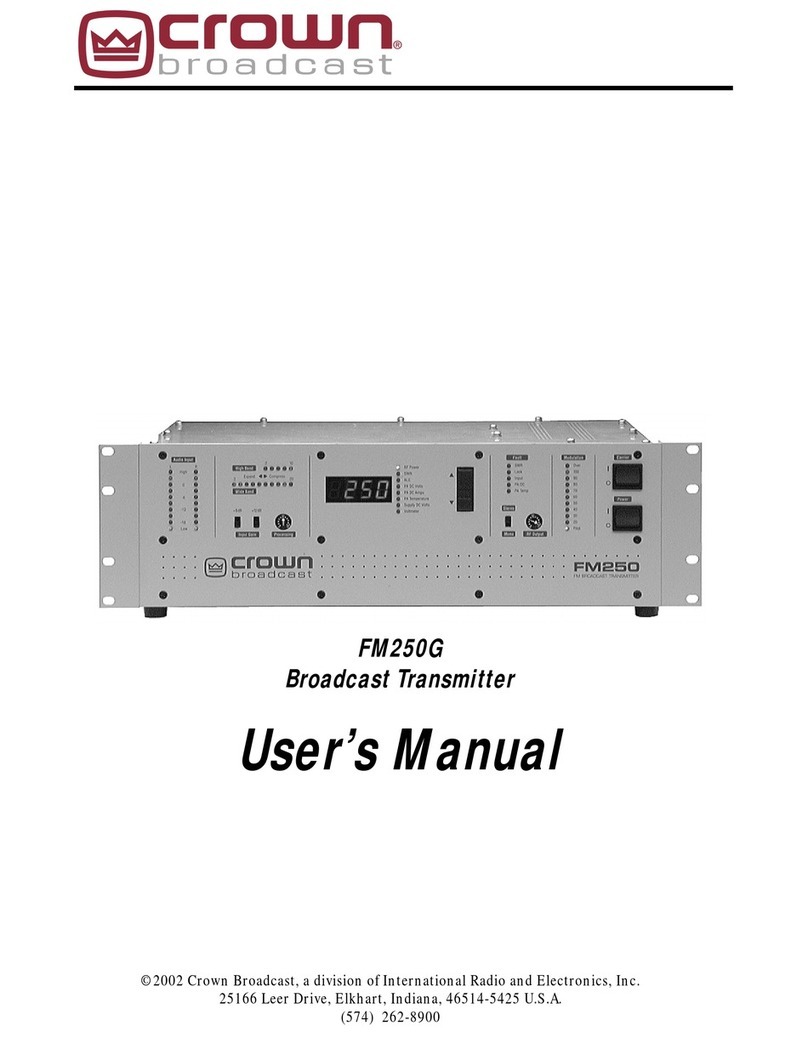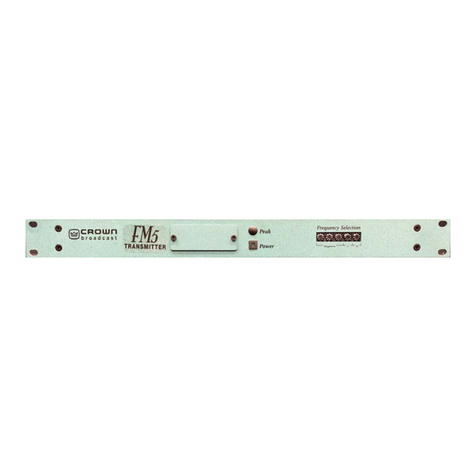
Rev.1.0
FMX30/FMX100/FMX250 User’sManual
iv
3.3.1Passwords...............................................................................................3-4
3.3.2MainFunction List...................................................................................3-4
3.3.3ReadingsFunction List............................................................................3-5
3.3.4SettingsFunction List..............................................................................3-6
3.3.5FactorySetting Functions........................................................................3-7
3.3.6AudioMonitor.........................................................................................3-7
3.3.7FaultLog .................................................................................................3-7
3.4Power-up procedure....................................................................................3-8
3.4.1ApplyPower............................................................................................3-8
3.4.2EnterInitialSettings................................................................................3-8
3.4.3Transmit..................................................................................................3-8
Section 4—PrinciplesofOperation
4.1Block Diagram.............................................................................................4-2
4.2AudioProcessorCircuitBoard.....................................................................4-3
4.2.1Balanced Input ........................................................................................4-3
4.2.2AudioProcessor......................................................................................4-3
4.3Stereo GeneratorCircuitBoard....................................................................4-4
4.3.1 Low-pass filter........................................................................................4-4
4.3.2Stereo Generator.....................................................................................4-5
4.3.3SCAInput................................................................................................4-5
4.3.4Processed Audio.....................................................................................4-5
4.4RFExciterCircuitBoard...............................................................................4-6
4.5DigitalManagementSystem........................................................................4-7
4.5.1Metering Boards......................................................................................4-7
4.5.2FrontPanel..............................................................................................4-7
4.6Motherboard................................................................................................4-8
4.7Voltage RegulatorCircuitBoard...................................................................4-8
4.8PowerRegulatorCircuitBoard....................................................................4-9
4.9RFDriver/Amplifier(FM30)..........................................................................4-9
4.10 RFDriver(FM100/FM250)...........................................................................4-9
4.11 RFAmplifier(FM100/FM250)......................................................................4-9
4.12 Chassis......................................................................................................4-10
4.13 RFOutputFilter&Reflectometer...............................................................4-11
4.14 ReceiverCircuitBoardOption....................................................................4-11
Section 5—Serviceand Support
5.1Service.........................................................................................................4-2
5.2 24–HourSupport.........................................................................................4-2
5.3SpareParts..................................................................................................4-2





































